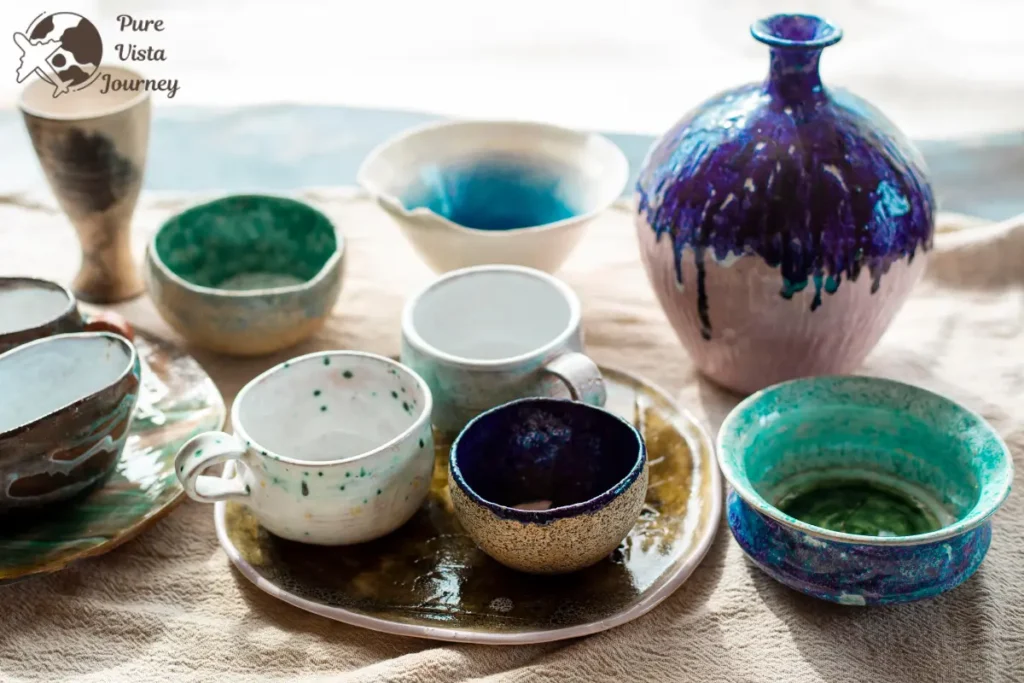The Pink City, Jaipur, contains a lot of Indian heritage craft, and one such craft we can only be mesmerized by is the Blue Pottery Jaipur is renowned for. Unlike normal potteries which uses usual clay, blue pottery is made from a unique mix of quartz stone powder, powdered glass, multani mitti (Fuller’s Earth), gum, borax and water. The novelty of this practice differentiates it and is considered one of the most unique art work of Rajasthan.
History of Blue Pottery in Jaipur
While blue pottery is ubiquitous today in Jaipur – the capital of Rajasthan, Rajasthan does house the best practitioners of the craft, whose origins can be traced to Central Asia. It was introduced into India by Mughal artists and became a royal art in the royal ateliers. Blue pottery was introduced to Jaipur in the 19th century, through Sawai Ram Singh II who was impressed by the craft and made efforts to develop it in Jaipur, he invoked in local artists to come here and learn this technique. Blue Pottery Jaipur has since then been an integral part of the cultural heritage of the city.
What Makes it Different?
Of course, the most evident feature of blue pottery is its color range. The predominant colors — turquoise blue and cobalt — are derived from the application of copper oxide and cobalt oxide. These are juxtaposed with soft white incarnations, commonly borrowed from Persian, Mughal and Rajasthani botanic representations.
Unlike other ceramics, blue pottery is fired at a relatively lower temperature, that renders it more fragile, but lends it a unique translucent glaze. Over the years, the types of products continue to increase and have included items as different as vases and bowls all the way to tiles and doorknobs, lamp bases and more, all while maintaining traditional appears.

Revival and Sustainability
The craft was nearly extinct by the middle of the 20th century. With the efforts of patrons Kripal Singh Shekhawat and others, blue pottery made a comeback. Several NGOS and artisan clusters today contribute to the revival of this craft by training next generations or bringing in modern designs.
In a planet that has woken up to sustainability, slow living and organically proved way, Blue Pottery Jaipur- comes with a green new option in Home Décor. The materials rthere are natural and their production is non-polluted.
Where to Purchase Blue Pottery in Jaipur
People visiting Jaipur too can check out several shops and artisan studios in places such as Amer Road, Bapu Bazaar and Kishanpole Bazaar. Several local craftsmen also sell their items at government emporiums and craft bazaars.
For those who don’t even fancy a trip to the Pink City, a host of Jaipur-based brands now ship globally, so the allure of blue pottery is no longer confined to homes in India.
Frequently Asked Questions
Q1. Is blue pottery durable for daily use?
Blue pottery is actually meant for display mainly. It can be used to present dry foods due to its delicate composition, but is not meant for cooking or storing liquids.
Q2. Why it is called blue pottery?
The blue used in the decoration is dominated by cobalt and copper oxides, hence the name.
Q3. Can I learn blue pottery in Jaipur?
many workshops and craft schools in Jaipur provide a hands-on learning experience in blue pottery and are welcoming of tourists and budding artists.
Q4. How to recognize real blue pottery?
Real blue pottery has a semi-transparent glaze and is much lighter than conventional clay pottery. Seek hand-painted motifs and traditional color palettes.
Q5. Is pottery blue good for the environment?
it’s made from natural materials and does not require the high-temperature kilns that traditional brick making does, so it is more sustainable.
Conclusion
If you love art, shop consciously or are a curious traveller, Blue Pottery Jaipur provides a stunning look at India’s vibrant tradition of craftsmen. Its historical significance, detailed patterns, and sustainable nature; make it still a classic piece of culture.







